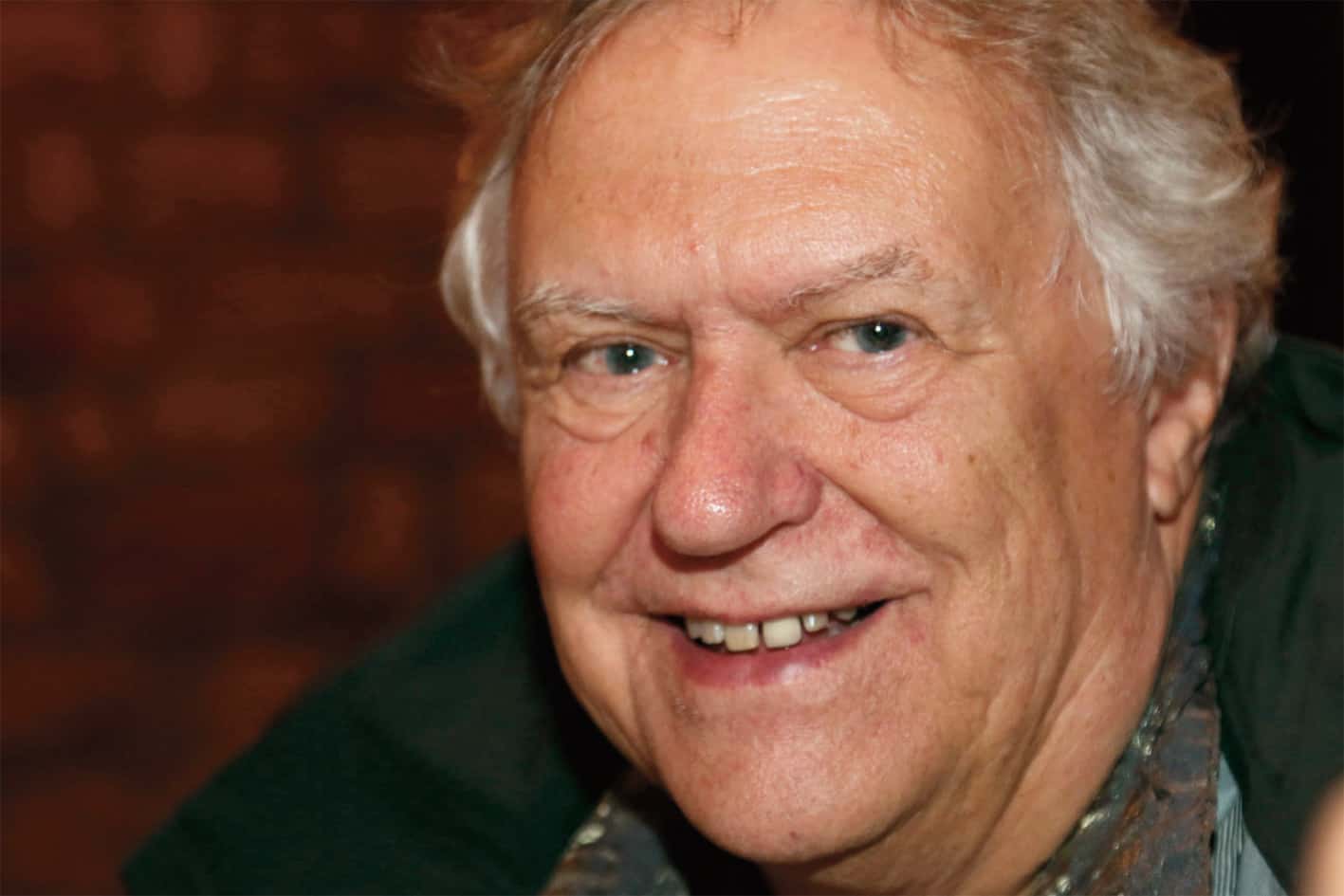Music: A Connected Art/Die Illusion der absoluten Musik:
A Festschrift for Jürgen Thym on his 80th Birthday
Verlag Valentin Koerner, Baden-Baden, 2023
Reviewed by Niall Hoskin
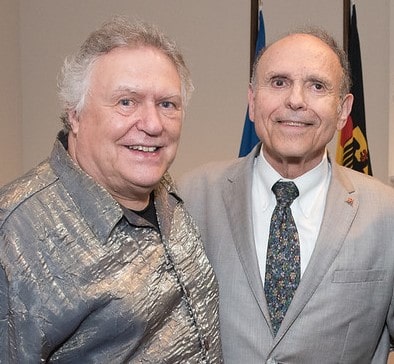
Jürgen Thym has provided the booklet texts for all three Toccata Classics albums of the music of Samuel Adler. The publication of a Festschrift of essays in honour of Professor Thym (22 in English, six in German) allows us to repay with compliment with a review – with our thanks to the reviewer.
The bare facts are quickly told: Jürgen Thym was born in Bremervörde, began his studies in Berlin and moved to the USA in 1969. From 1973 to the present day he has been active at the Eastman School of Music at the University of Rochester. This volume salutes the emeritus professor of musicology on his 80th birthday; the contributions attest to an openness to, and interest in, wider areas of enquiry, and to an encouraging attitude to the work of others. The volume is dedicated to him as ‘Scholar, Teacher, Mentor, Friend’: he clearly has a gift for friendship and a talent for navigating the sometimes choppy waters of faculty politics.
The centre of Thym’s research focused initially on German art-song, for which this bilingual scholar was ideally placed, moving outwards from the core of Eichendorff, Schumann and Beethoven to encompass Loewe, Clara Schumann, Fanny Hensel, Reinhard Schwarz-Schilling and many others, up to Luca Lombardi.
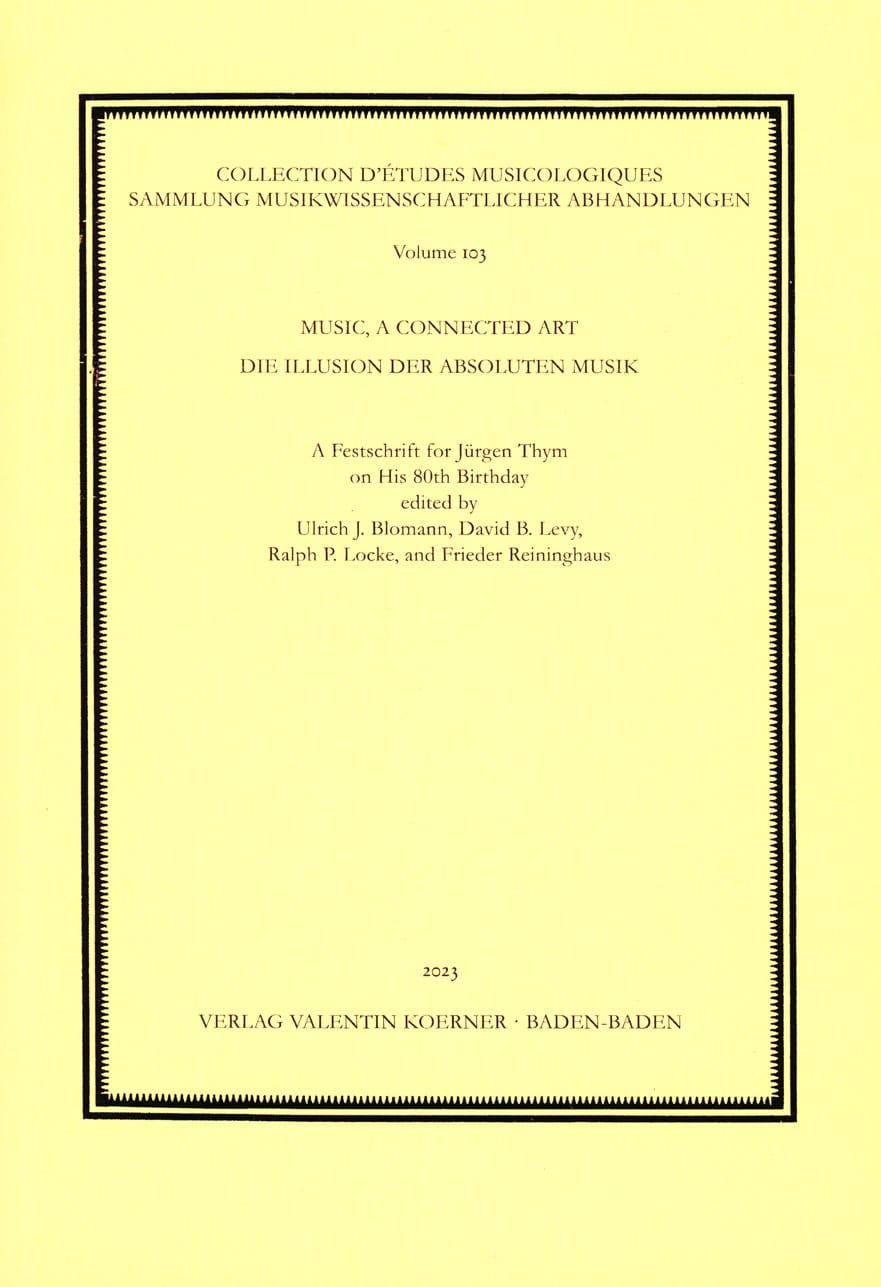
By its very nature, such a publication, involving a wide range of highly qualified academics, each with specialisms of his or her own, will not appeal to every reader in the same way; thus, as a linguist and performer, I found some chapters more congenial than others. These scholars share Thym’s energetic enthusiasm for their subject matter, however, and most achieve accessibility beyond their own discipline.
Essays in the first section, ‘The Nature of Music, Music-making and Listening’, pose massive questions, and posit some answers. Ulrich J. Blomann’s ‘On the Origin of Music’ promotes a radical hypothesis, based on palaeontology and anthropology, that music has a healing role rather than merely being serenade, lullaby or war-cry. After this disquisition, and Wilfried Gruhn’s investigation of ‘Epistemological and Neurobiological Aspects of Perception’, Michael Broyles’ ‘Why the Concert Didn’t Die, Mr Gould’ offers a welcome antidote, firmly rooted in musical activity. He points out that concerts are rarely solely an auditory experience, and that technology has enhanced the visual aspects.
Code-breaking fun follows with R. Larry Todd: Niels Gade revelled in the suitability of his name for representation by musical notes, a suitability recognised by his friend Robert Schumann. Todd all but points to a spot of nominative determinism: Gade’s name only lacks a diacritic (thus: Gåde) to mean ‘riddle’ in Danish and he published a set of piano pieces titled ‘Rebus’.
‘Music and Poetry’ is by far the longest section, appropriately in the case of Thym, and in a volume entitled ‘Music – A Connected Art/Die Illusion der absoluten Musik’, connections from beyond music are bound to abound. Hanns-Werner Heister introduces the reader to Manfred Winkler, a Ukrainian-born Jewish polymath whose poetry is replete in echoes of musical forms; his ‘Morgenrot und schwarze Hand’ transmutes an outwardly simple song into a highly charged political commentary.
An editorial coup de théâtre follows, with the shocking juxtaposition of Hartmut Möller’s piece on Joseph Maria Müller-Blattau, a cynical plagiarist and opportunist described here as ‘the voice of the [Nazi] takeover’. His devious duplicity reminds me of Carl Orff’s double-dealing over the ‘Weisse Rose’ movement.
Four contributions focus on Schubert with varying success. Susan Youens looks at an early French-language version of Winterreise by a certain F. Bélanger, whose efforts exemplify the tag ‘traduttore traditore’. His appropriation and distortion of Müller’s texts show ‘French native garb imposed on an alien Austrian form’, where neither sensibility nor prosody reflect the original. Youens praises the ‘inherent nobility’ of the enterprise, but rather too late, it seems to me. Lorraine Byrne Bodley examines a strange allegorical and apparently autobiographical tale written by Schubert when syphilis confined him and curtailed his composing. ‘Mein Traum’, Bodley concludes, remains a puzzle after 200 years. Yonatan Malin homes in on something more finely attuned to Jürgen Thym’s work and closer to the world of the performer: a musical and literary analysis of the first and last songs of Winterreise, with special attention to the notion of terminal modification. There is food for thought here for performer and listener alike. More left-field is Seth Brodsky’s chapter, which he calls a ‘Short Fantasy on Doppelgängers, Pedagogy, Memory and Memories’: he argues for teaching the music of the last two centuries through the prism of not only the French Revolution but also the Haitian one. A dizzying piece this, but a challenging notion. I feel that Rob Haskins rather torpedoes his own ‘hermeneutical views of John Cage’, as he examines two works with reference to Cage’s interest in Zen, by pointing out the composer’s own aversion to prescribing meaning to listeners.
As a recitalist I was attracted to the ideas of Jennifer Ronyak and Matthew Valverde who both point towards new ways of presenting Lieder: Ronyak examines the last song in Schumann’s ‘Heine-Liederkreis’ (Op. 24); beyond her hermeneutical approach to the chorales (almost) quoted therein, she ponders the notion of excerpting songs from cycles – even this one which ends on an unresolved dominant! Valverde considers gendered performativity and what he calls ‘cross-singing’ in his ‘Whose Spinnrad Is It Anyway?’. His idea of a ‘Singer’s Gender Deconstruction Toolkit’ is an attractive possible route to rejuvenating the conventional Liederabend.
There are more ‘own goals’ along the way. Harald Krebs compares two settings of Eichendorff’s ‘Nachtblume’, by Fanny Hensel and Hugo Wolf, a comparison surely vitiated by the difference in date between their composition. Stephen Rodgers presents a song by Marie Hinrichs which seems to be less ‘deceptively simple’ than simply simple. And Albrecht Riethmüller chronicles a squabble between a disparate quartet of commentators over Beethoven’s ‘Tempest’ Sonata (No. 17; Op. 31, No. 2). After laying out the arguments, Riethmüller asks rhetorically whether any of the differing approaches brings listeners closer to an appreciation of the score, before concluding that the ‘controversy’ was nothing more or less than an unedifying bout of ill-tempered point-scoring.
The section ‘Music and Theater/Opera/Film’ actually deals with opera and musicals. Caroline Ehman identifies Faust figures in three recent operas, the best-known of them John Adams’ Doctor Atomic, and opines that the Faust character is as strong as ever. Frieder Reininghaus surveys war-themed works from Monteverdi’s Combattimento di Tancredi e Clorinda, through various Armida treatments, Les Troyens, the War Requiem and The Death of Klinghoffer up to Sarah Nemtsov’s arresting IS-related Sacrifice. He concludes soberly: ‘the footprints of war seem far more enduring in operatic history than the messages of the angels of peace’ (my translation).
The tone is lightened by the two essays on musicals. Kim Kowalke looks at ‘faulty memory’ songs as exemplified by ‘Ah yes! I remember it well’ from Lerner and Loewe’s Gigi. The complex genesis of the song involves Weill and Sondheim as well: Alan J. Lerner apparently plundered Weill’s ‘Love Life’ for the song, having failed to remember it wasn’t his own work. Lotte Lenya jogged his (faulty) memory! The section ends with Rufus Hallmark lamenting the bowdlerising of Rodgers and Hammerstein’s musicals in their film versions, and the solecisms committed in the cause of ‘verisimilitude’ on the way to celluloid.
‘Music-Making in Time and Place’ starts with two essays about teaching post-Black Lives Matter. Mary Natwig interrogates and aims to eschew the ‘dead white male European’ paradigm; and Ralph Locke seeks to encompass ‘non-canonical’ musics like shape-note singing in his courses, as well as encouraging cross-curricular approaches to ‘Music-and-X’.
Kerala Snyder is working on an edition of the Vespers music of Simone Vesi, a seventeenth-century native of Forlì active in Padua. These pieces, some for double choir, feature multiple vocal soloists and rich instrumentation. One would like to hope that an imaginative recording company might take these pieces up!
For me the highlight of this section is Theodore Albrecht’s ‘Gegenliebe’, charting the reciprocal love of Beethoven and the orchestra of the Theater an der Wien. ‘Gegenliebe’ is an early song by the composer, furnished with new words as the main theme of the Choral Fantasy, which featured in the infamous monster concert of 22 December 1808 – the Akademie concert at which the Fifth and Sixth Symphonies were also performed, alongside the Fourth Piano Concerto, movements of the Mass in C, the concert aria Ah, perfido! and a piano improvisation. As well as tailor-made solos for members of the orchestra, Beethoven inserts a Haydnesque gag in highlighting the reiterated choral cries of ‘Kraft’. As well as meaning ‘strength/power’, it was the name of the father-son pair of cellists in the orchestra. Moreover, the younger Kraft had a baby son some 18 months old at the time of the concert, and so the third ‘Kraft’ is more triumphant still. Contemporary accounts report ill-will from the players after the over-long, chilly concert; but at least on Beethoven’s part, the origins of the Fantasy were born of affection and good humour.
The final section, ‘Music and the Individual Composer’s Voice’, is a mixed bag David Beach offers a ‘Schenker lite’ approach to two pieces by J. S. Bach, suggesting that they were both built on the same harmonic basis and that this connection might explain part of Bach’s compositional process and the approach he used when instructing Wilhelm Friedemann.
The runner-up for best title is ‘Will the Real F. Mendelssohn Please Stand Up?’. Fanny Hensel’s Ostersonate was long misattributed to her brother Felix, and for just as long was missing. Marie Rolf is preparing a new edition for Bärenreiter: another space for performers to watch. David Levy examines a ‘might-have-been’ in the form of a ‘Nibelung’ opera proposed by Friedrich Theodor Vischer and Louise Otto, part of the mid-nineteenth century search for German national identity. The feminist Otto produced a libretto which aimed to promote the female characters, but Wagner rejected it, at least partly because its ‘Grand Opera’ approach of set-piece arias and ensembles didn’t chime with his evolving ideas of music drama.
The last essay is by organ scholar Douglas Reed (more nominative determinism?), who illustrates how the interface of modern electro-pneumatic organ technology and modernist compositional techniques influences William Albright’s Juba for Organ (1965).
‘Greetings and Reminiscences’ follow; many of them tend to be more about their author than the dedicatee, but a picture nevertheless emerges of Jürgen Thym as a sympathetic and open character with a twinkle in the eye, wide interests – and a love of cats. Two stand-out contributions come from old friends and colleagues who pay affectionate tribute and include a piano piece dedicated to Thym. Luca Lombardi’s laconic offering is entitled Sorge und Hoffnung (‘Worry and Hope’), and Samuel Adler’s Bagatelle for Jürgen is marked ‘with a happy spirit’ and uses note-substitutions for Thym’s name. 1
This wide-ranging collection of essays reflects the character of the man at their centre. They display originality of thought and a rejection of dogma and of easy conclusions; the best of them demonstrate a humorous humanity. They are a fitting tribute to an inspiring and endearing figure.
Samuel Adler Recordings
-
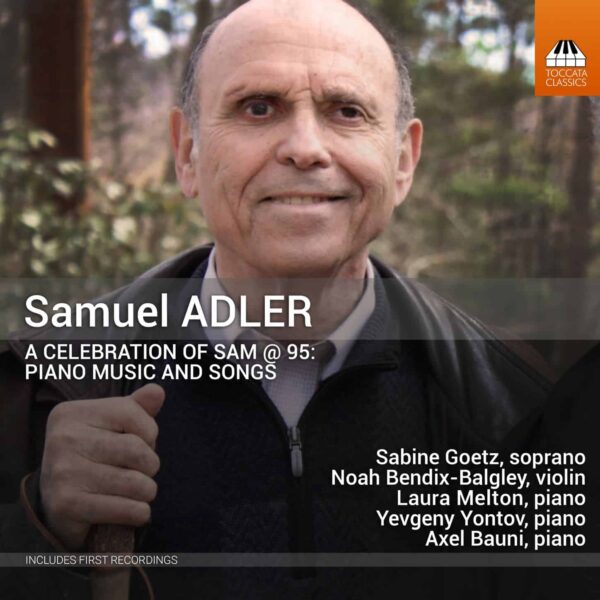 Samuel Adler: A Celebration of Sam @ 95: Piano Music and Songs£8.00 – £14.00
Samuel Adler: A Celebration of Sam @ 95: Piano Music and Songs£8.00 – £14.00 -
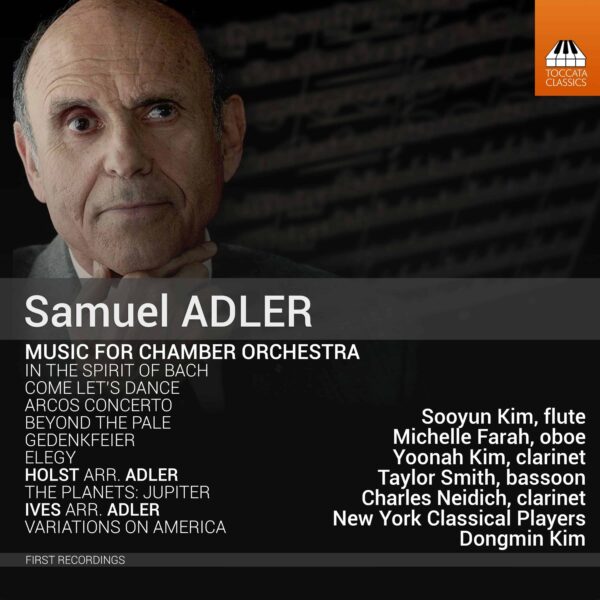 Samuel Adler: Music for Chamber Orchestra£8.00 – £14.00
Samuel Adler: Music for Chamber Orchestra£8.00 – £14.00 -
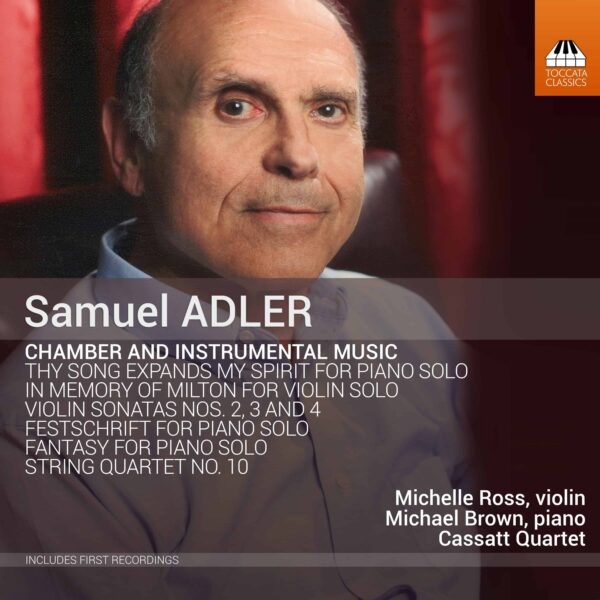 Samuel Adler: Chamber and Instrumental Music£8.00 – £14.00
Samuel Adler: Chamber and Instrumental Music£8.00 – £14.00
- As the fifth of Adler’s Six Short Occasional Pieces for Piano (2019–20), it can be heard on A Celebration of Sam @ 95(Toccata Classics TOCC 0686). ↩︎
